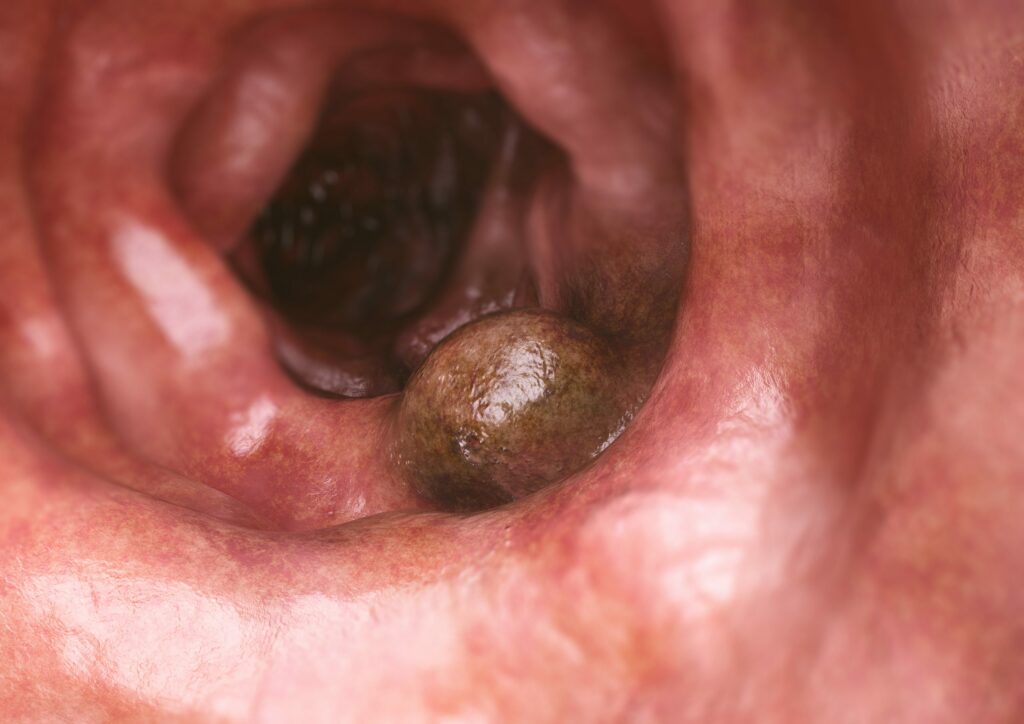24th February 2022
There are two common histological types of oesophageal cancer called squamous cell carcinoma and adenocarcinoma. These two types of oesophageal cancer make up most cancer cases, however, there are rarer types of oesophageal cancer that also exist including poorly differentiated neuroendocrine cancer, small cell cancer and soft tissue sarcomas, such as gastro-intestinal stromal tumours (GISTs) (Macmillan, 2022).
There are differences between squamous cell carcinoma and adenocarcinoma of the oesophagus, including the way in which they develop, where they are situated within the oesophagus and variances in the likelihood of each of them developing based on particular risk factors.
Oesophageal cancer can develop anywhere in the oesophagus. Typically, oesophageal cancer that is situated towards the middle or upper oesophagus are squamous carcinoma cancer cells and cancers that form in the lower part near the stomach region are adenocarcinomas (Macmillan, 2022).
Squamous cell carcinoma is a cancer that develops within the thin cells of the mucosa that line the inside of the oesophagus. Alternatively, adenocarcinoma develops from the fluid secreting glandular cells along the lining of the oesophagus (National Cancer Institute, 2022).
Staging oesophageal cancer is extremely complex and interestingly the staging varies depending on whether the patient has squamous cell carcinoma or adenocarcinoma (Cancer Research UK).
A person’s risk of developing oesophageal cancer depends on many factors, including age, weight, food and drink, medical conditions and radiotherapy. In addition to this, certain risk factors can influence whether an individual is more prone to developing squamous cell carcinoma or adenocarcinoma oesophageal cancer or both of them. These risk factors are the following:
- Smoking – causes around 35% of oesophageal cancers in the UK. Smoking increases the risk of the 2 main types of oesophageal cancer: squamous cell cancer and adenocarcinoma
- Barrett’s oesophagus – 3 – 13% of people who suffer from this will develop oesophageal adenocarcinoma
- Alcohol – 13% of oesophageal cancer causes are caused by the consumption of alcohol. Drinking more than 14 units of alcohol a week increases the risk of developing oesophageal cancer, particularly squamous cell carcinoma
The relation between Barrett’s oesophagus and adenocarcinoma is the only precursor lesion for oesophageal adenocarcinoma. Barrett’s oesophagus is caused by a change in the lining of the oesophagus, from squamous mucosa to columnar lined epithelium. It can be caused by long-term reflux inflaming the oesophagus. It is identified by endoscopy and confirmed by assessment of biopsies. Patients with Barrett’s oesophagus have a risk at least ten times higher for developing oesophageal adenocarcinoma (Thrift, 2016).
In GatewayC’s ‘Oesophageal Cancer – Early Diagnosis’ course, Mr Simon Galloway, Consultant General and Upper Gastrointestinal Surgeon talks to Dr Sarah Taylor, GatewayC GP Lead about Barrett’s oesophagus.
Find out more:
- Access GatewayC’s ‘Oesophageal Cancer – Early Diagnosis’ course
- Read ‘About stages and grades’ of Oesophageal Cancer, Cancer Research (2022)
- Read about ‘Oesophageal cancer’, Macmillan (2022)
- Read ‘Esophageal Cancer Treatment (Adult) (PDQ®)–Patient Version’, National Cancer Institute (2022)
- Read ‘The epidemic of oesophageal carcinoma: Where are we now?’, Aaron P. Thrift (2016)
- Read ‘Early diagnosis of oesophageal cancer’, EL Bird-Lieberman and RC Fitzgerald (2009)



